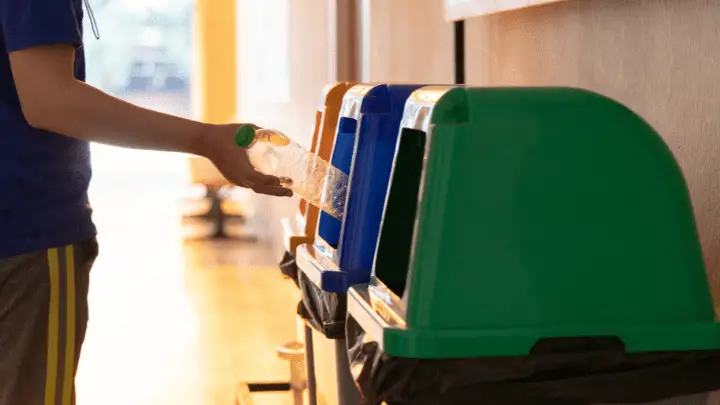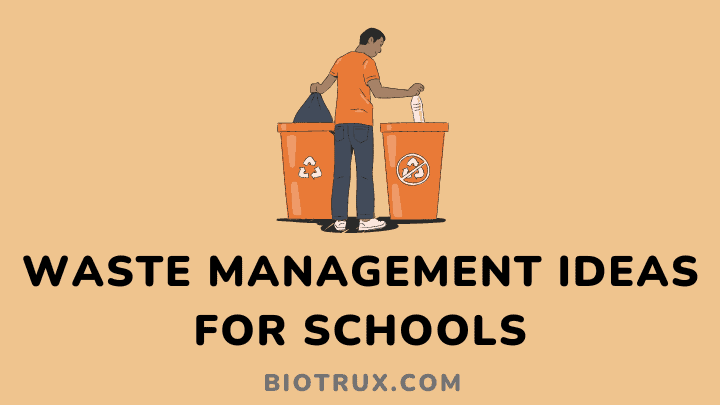Waste management is an essential issue for schools. Schools produce enormous amounts of waste, which must be disposed of properly to protect the environment. Thankfully, schools can implement several practical ideas to help reduce their waste output and increase sustainability.
Here are practical ideas to help schools manage their waste more efficiently. From composting to creating sustainable purchasing policies, these tips will help schools take the proper steps to minimize their environmental impact.
Read on to learn how your school can start managing waste better today.
1. Reduce Wasteful Consumption in Schools
Schools are often thought of as centers for learning, but they also tend to be significant contributors to waste.
Reducing wasteful consumption in schools is an effective way to manage school waste. This can involve reducing paper by switching to digital resources, investing in compostable and biodegradable materials, and opting for more sustainable alternatives.
This can help to reduce waste sent to landfills and help schools save money on waste removal costs. Additionally, students can be taught how to sort recyclable materials, compost organic materials, and re-purpose items that would otherwise end up in a landfill.
2. Recycle Appropriately

Recycling is an important part of any waste management plan, and schools are no exception. It’s also essential to educate students on the importance of recycling and how they can do their part to help reduce the amount of waste generated at school.
This starts with setting up separate bins for different materials and ensuring students understand which type of waste goes in each bin. Once the bins are set up, it’s a good idea to start collecting data on the amount of waste generated at the school.
This data can be used to create a plan for improving the recycling system, such as investing in a good recycling program or establishing a composting system.
3. Reuse Materials
One of the most effective ways to reduce the amount of waste in schools is to promote the sharing and reusing of items. It is possible to encourage students and staff to donate items they no longer use, like notebooks, textbooks, or school supplies.
Furthermore, creating a “swap shop” within the school where items can be donated and reused is a great way to reduce waste. Furthermore, investing in durable products is important for waste management when purchasing new items for the school.
Buying quality items that can be reused over long periods means fewer items will end up in the trash over time. Additionally, investing in quality materials from the start often costs less in the long run since they will not need to be replaced as often.
4. Educate Students and Staff on Sustainable Practices
Regarding waste management in schools, one of the most effective strategies is to educate students and staff on the importance of waste management. This is because it can help reduce the amount of waste produced.
To do this, it’s important to host seminars and workshops that discuss the impact of waste on the environment and how each individual can play a part in reducing waste. In addition to hosting workshops and seminars, it’s also important to incorporate sustainability into the curriculum.
Schools can encourage waste management among students and staff by introducing recycling, composting, and zero-waste living topics. Finally, it’s important to have clear expectations for proper recycling and waste disposal.
5. Implement Waste Reduction Policies
To maximize waste management efficiency in schools, it is important to establish a zero-waste goal and implement a set of policies that can help achieve this.
This includes introducing waste minimization guidelines for staff and students, including recycling rules, composting, and proper disposal of hazardous materials. These policies should also include guidelines on reducing, reusing, and recycling.
To ensure that these policies are followed, monitoring and reviewing them regularly is important. This could include a quarterly or annual assessment to identify areas of improvement and keep track of progress toward the zero-waste goal.
Lastly, schools should also consider incentivizing recycling by creating rewards or recognition for students who properly follow instructions.
6. Minimize Food Waste
Food waste is a huge issue today that needs to be addressed to create a sustainable future. Schools have an essential role in reducing food waste and promoting waste management, and several strategies can be implemented to do this.
Firstly, it is important to ensure food is cooked in the right quantities to avoid unnecessary wastage. Also, schools should encourage using leftovers rather than disposing of them. This not only reduces food waste but also helps to keep costs down.
Another way to reduce school food waste is by donating surplus food to needy people. Donating leftover food is an effective way of eliminating waste while helping those less fortunate.
Schools can partner with local charities or organizations that support people in need so that they can benefit from the donated food.
Finally, schools should consider providing compostable food packaging. Compostable packaging is made from natural materials such as paper and cardboard, which can easily be broken down and used as fertilizer in gardens or parks.
This helps reduce the amount of non-biodegradable materials in landfills and is better for the environment.
7. Properly Dispose of Hazardous Waste
The first step in properly disposing of hazardous waste is to separate hazardous waste from regular waste. Different types of waste require different disposal methods, and hazardous materials can cause significant damage if disposed of improperly.
Once the hazardous waste is separated, it must be safely stored until it can be disposed of properly. The next step is to contact a local hazardous waste collection center. These centers will have the expertise and resources to manage and dispose of hazardous waste properly.
Following these steps, schools can ensure that their hazardous waste is properly disposed of to protect their staff and students from potential hazards. Proper disposal of hazardous waste is essential for effective school waste management and must be taken seriously to ensure everyone’s safety.
8. Take Advantage of Waste-to-Energy Programs
Waste-to-energy (WTE) programs help to convert waste materials into renewable energy, such as electricity or heat. This type of program provides an opportunity for schools to reduce their reliance on non-renewable sources of energy and move towards more sustainable practices.
Schools should look into energy companies that offer waste-to-energy programs to take advantage of these programs. Researching the specific details of each company’s program and understanding how it would affect the school’s operations and budget is essential.
Schools should also consider partnering with local companies that provide alternative energy sources. Many of these businesses specialize in waste-to-energy services and can help set up and maintain successful programs.
This option can be especially beneficial for smaller schools that don’t have access to the same resources as larger institutions.
9. Get Creative and Think Outside the Box
One way to do this is to involve students in finding solutions to minimize waste. By allowing students to participate in the process, they can better understand the importance of conserving resources and be more engaged.
Researching innovative technologies suitable to reduce waste is another way to encourage creative problem-solving. Technologies such as biodegradable packaging, composting, and advanced recycling systems are a few potential solutions.
Having students research and discuss these new technologies can help them understand how their school can reduce waste output. Finally, seeking alternative ways to repurpose, recycle, and reuse items can also be an effective way to reduce school waste.
For example, utilizing old furniture for craft projects or donating unused supplies to other organizations are just a few options.
10. Promote Green Activities and Initiatives
Schools are excellent places to start implementing green activities and initiatives to reduce waste. Implementing simple practices, such as composting and recycling, can have a tremendous positive impact.
Recycling programs can provide students with an understanding of their ecological footprint and help them to make better decisions about their waste. Composting can help reduce the amount of waste that goes into landfills and provide valuable nutrients for school gardens.
Schools can also implement food waste programs that ensure that edible food isn’t thrown out but donated to those in need. Schools can manage waste more effectively by educating students about green initiatives and providing them with tools to reduce their environmental impact.
FAQs
What kind of waste do schools produce?
School waste typically comprises single-use items like paper, plastic, and food packaging unsuitable for reuse or recycling. This type of waste exists in higher volumes than residential or commercial waste.
What is the essence of waste management for schools?
The essence of waste management for schools is to minimize waste and promote recycling, reuse, and resource conservation to protect the environment and reduce costs.
What are the major challenges when combating waste management for schools?
The major challenges faced in combating school waste management include the following:
- lack of infrastructure
- limited resources
- inadequate staff training
- inadequate funding, and
- limited public education on the importance of proper waste management
Final Thoughts
Schools are responsible for managing waste properly and reducing their environmental footprint. Implementing the practical ideas outlined in this article can go a long way toward helping schools achieve their sustainability goals.
From instituting WTE programs to reusable items to promoting a “no waste” culture, these ideas will help schools make a real difference in waste management.
With some thoughtful implementation and some good old-fashioned hard work, schools can help ensure that future generations have a clean and healthy environment to call home.
A school can do its part to protect the environment, as can a business. For more information, read the article on the role of businesses in protecting the environment.
Thanks for reading.
